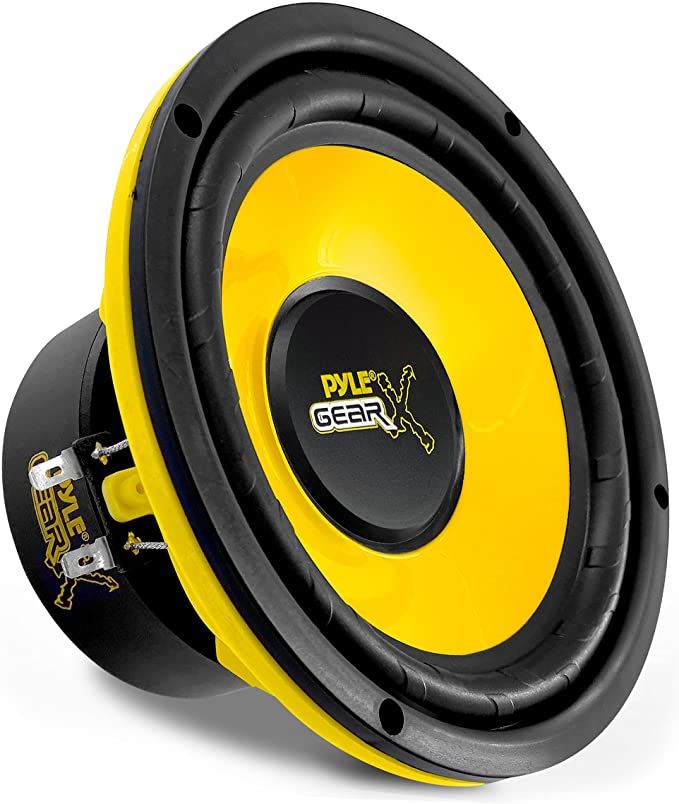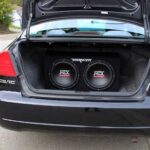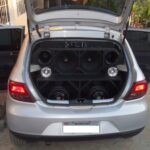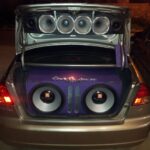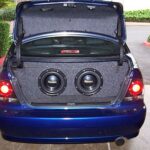Are Subwoofers Illegal | Unveiling the Truth (h1)
Subwoofers are not illegal, but certain regulations dictate their use to prevent noise disturbances. Subwoofers have become increasingly popular in car audio systems, home theaters, and music production, offering dynamic and powerful bass reproduction.
(This Portion is for Feature Snippet)
However, the question arises whether these booming sound systems are legal or not. The truth is, subwoofers themselves are not illegal. They are simply a component of audio equipment designed to enhance low-frequency sounds. However, regulations exist in many jurisdictions to control excessive noise pollution, ensuring that subwoofers are used responsibly.
This article will explore the legality of subwoofers, the regulations governing their use, and the potential consequences of disregarding these rules. Understanding the legal framework surrounding subwoofers is important for both enthusiasts and those affected by excessive noise disturbances.
Legal Regulations on Subwoofers (h2)
Legal regulations on subwoofers are essential to understand for anyone interested in using these powerful sound systems. Whether it’s for your vehicle or home audio system, there are specific laws and guidelines that dictate their usage. From local noise ordinances to vehicle noise regulations and home audio system restrictions, being aware of these legal aspects is crucial for staying compliant and respectful of others’ rights to peace and quiet.
Local Noise Ordinances (h3)
Local noise ordinances vary greatly from one location to another. These laws set limits on the maximum permissible noise levels, often measured in decibels, which apply to residential, commercial, and industrial areas. Violating these ordinances can result in fines and other penalties. When it comes to subwoofers, it’s crucial to familiarize yourself with the specific regulations in your area to avoid any legal repercussions.
Vehicle Noise Regulations (h3)
Vehicles equipped with subwoofers must adhere to specific noise regulations to ensure they don’t disrupt the peace and quiet of residential and urban areas. These regulations typically involve maximum allowable sound levels and may also dictate the times during which loud music or bass should be minimized. It’s important for vehicle owners to comply with these regulations to avoid potential fines and legal consequences.
Home Audio System Restrictions (h3)
When setting up a home audio system with subwoofers, it’s important to be mindful of any restrictions imposed by local laws or homeowners’ associations. These restrictions may govern the times when loud music and bass are permitted, as well as the maximum sound levels allowed for residential areas. Familiarizing yourself with these regulations can help you enjoy your audio system while being considerate of your neighbors and avoiding any legal issues.
Public Nuisance Concerns (h2)
Subwoofers can bring the party to life, but they may also cause public nuisance concerns, especially if they disturb the peace of your neighbors. It’s important to be mindful of the impact of subwoofers on your neighbors and know how to deal with any noise complaints that may arise.
Impact Of Subwoofers on Neighbors (h3)
Subwoofers, with their powerful bass, can transmit vibrations through walls and floors, causing disturbances to nearby residents. The low-frequency sound can travel far and wide, infringing on the tranquility of others. Even at low volumes, subwoofers can still be heard as a constant, thumping noise, disrupting the peace and quiet of the surrounding area.
Dealing With Noise Complaints (h3)
Addressing noise complaints promptly and respectfully is crucial. Approach your neighbors with an open mind and a willingness to find a resolution. Consider compromises, such as reducing the volume during certain hours or investing in soundproofing solutions to minimize the impact of the subwoofer on adjoining properties.
Enforcement Of Noise Laws (h2)
Enforcing noise laws involves addressing subwoofer noise concerns. Subwoofers may be considered illegal if they exceed decibel limits set by local regulations. Violators can face fines or legal actions for disrupting the peace with excessive bass.
Noise pollution is a common issue that affects communities everywhere. Whether it’s a loud party down the street or a neighbor’s booming subwoofers, excessive noise can be a nuisance and can lead to conflicts. That’s why noise laws and regulations exist to maintain peace and quiet.
Fines For Noise Violations (h3)
When it comes to noise infringements, authorities have the power to issue fines as a means of enforcement. These fines vary depending on the severity of the violation, location, and local regulations. It’s crucial to understand that these fines can add up quickly if you repeatedly ignore noise regulations.
In some areas, the penalties for noise violations can be quite steep, ranging from a few hundred dollars to thousands of dollars. These fines serve as a deterrent to discourage individuals from causing excessive noise disturbances. Repeat offenders may face even higher fines and potential legal consequences.
Legal Actions for Excessive Noise (h3)
In addition to fines, legal actions can be initiated against individuals or establishments that repeatedly violate noise laws. These legal actions can include restraining orders, injunctions, or closure orders. Local authorities take noise complaints seriously, and when necessary, they will not hesitate to take legal action to protect the peace and tranquility of the community.
Moreover, in extreme cases, repeated noise violations can result in criminal charges. These charges can potentially lead to serious consequences, such as probation, community service, or even imprisonment. It’s essential to recognize that noise regulations are not to be taken lightly, as the consequences can have a significant impact on one’s life.
In conclusion, the enforcement of noise laws is crucial in maintaining a peaceful and harmonious environment for all. Understanding and adhering to these regulations not only respects the rights of others to enjoy a quiet living space but also helps to avoid fines and potential legal consequences. So, next time you consider cranking up your subwoofer, think about the potential repercussions and be considerate of your neighbors.
Subwoofer Installation Guidelines (h2)
Subwoofer installation guidelines are essential for those wondering if subwoofers are illegal. Learn the proper steps to installing subwoofers without breaking any laws and enjoy enhanced audio experiences without the worry of legal consequences.
Proper placement is crucial for reducing noise and getting the best sound quality from your subwoofer.
Proper Placement for Reduced Noise (h3)
– Place subwoofers away from walls to minimize reflections. – Avoid corners as they can amplify bass frequencies. – Experiment with different locations for the optimal sound quality.
Soundproofing Options for Subwoofers (h3)
Soundproofing your room can enhance bass performance and reduce disturbances to neighbors. – Use bass traps in corners to absorb excess low frequencies. – Install acoustic panels on walls to minimize sound leakage. – Consider a subwoofer isolation pad to reduce vibrations. Remember, following these guidelines can improve your overall audio experience and keep you in compliance with noise regulations.
Noise Limits and Decibel Levels (h2)
Understanding the limits and levels of noise, especially concerning subwoofers, is crucial to ensure you stay within the legal boundaries. When it comes to subwoofers, it’s essential to have a grasp on how noise levels are measured and what dB levels are considered permissible by law.
Understanding Db Levels (h3)
Decibel (dB) is the unit used to measure the intensity of sound. Understanding decibel levels is crucial for not breaching noise limits.
How Noise Levels Are Measured (h3)
Noise levels are typically measured using a sound level meter, expressed in decibels. It’s important to note that different areas might have different noise ordinances and restrictions when it comes to acceptable dB levels.
Subwoofer Alternatives (h2)
When it comes to enhancing the audio experience in your car or home, subwoofers are a popular choice. However, there are times when subwoofers may not be feasible due to space constraints or legal restrictions. In such cases, considering subwoofer alternatives can be a practical and effective solution to still achieve deep and rich bass without the use of traditional subwoofers.
Low-profile Subwoofers (h3)
Low-profile subwoofers are designed to deliver powerful bass without taking up significant space. These compact subwoofers feature slim designs that can easily fit under seats or in tight spaces, making them an ideal alternative for those who are concerned about space limitations. Despite their smaller size, low-profile subwoofers can still produce deep, resonant bass that enhances the overall audio experience. They are a great option for vehicles or rooms where a traditional subwoofer may not be a practical choice.
Soundbar With Subwoofer Combo (h3)
A soundbar with a built-in subwoofer or a separate subwoofer unit offers a space-saving alternative to traditional subwoofers. Many modern soundbars are designed to deliver immersive, room-filling sound with integrated subwoofers, eliminating the need for additional speaker units. Alternatively, a soundbar with a separate subwoofer unit can provide a well-rounded audio experience, with the subwoofer handling the low-frequency sounds for a more balanced sound profile. This setup is a convenient and effective solution for those seeking a compact and streamlined audio system without compromising on bass performance.
Signs Of Subwoofer Disturbance (h2)
Recognizing Excessive Bass Noise (h3)
Excessive bass noise from a subwoofer is often characterized by a deep, booming sound that reverberates through walls and floors. This can be particularly noticeable in the evening or night when ambient noise levels are lower, causing the bass to carry further. Additionally, rattling or vibrating windows, furniture, and mirrors can indicate excessively loud subwoofer usage.
Effects Of Subwoofer Vibrations (h3)
Subwoofer vibrations, particularly at high volumes, can have a range of negative effects on individuals and surroundings. These vibrations may cause discomfort, agitation, or annoyance to neighboring occupants. Furthermore, the structural integrity of nearby buildings or objects can be compromised, leading to potential damage over time.
Community Guidelines on Subwoofers (h2)
When it comes to enjoying your favorite music or movies, subwoofers can add a whole new dimension to the audio experience. However, it’s important to be aware of the rules and regulations surrounding the use of subwoofers in residential communities. Homeowners’ associations and apartment complexes often have specific guidelines in place to ensure that the enjoyment of one resident does not disrupt the peace and tranquility of others. Let’s take a closer look at the community guidelines on subwoofers, including homeowners’ association rules and apartment complex regulations.
Homeowners Association Rules (h3)
If you live in a community governed by a homeowner’s association (HOA), there may be specific rules regarding subwoofers. HOAs are responsible for maintaining the overall harmony and well-being of the community, and this includes noise control. Some HOAs have regulations that limit the volume and bass levels of subwoofers. These restrictions are put in place to prevent disturbances to neighbors, particularly those living in close proximity to each other. Violating these guidelines may result in fines or other disciplinary actions.
It is essential to familiarize yourself with your HOA’s rules and regulations, including any provisions related to subwoofers. These rules are typically outlined in the HOA’s governing documents, such as the bylaws or the covenants, conditions, and restrictions (CC&Rs). Make sure to review these guidelines carefully before installing or using a subwoofer in your home. If you have any questions or concerns, don’t hesitate to reach out to your HOA board or management for clarification. By adhering to the HOA rules, you contribute to a harmonious living environment for everyone in your community.
Apartment Complex Regulations (h3)
Living in an apartment complex comes with its own set of regulations, and subwoofers are no exception. Apartment complexes have a duty to ensure that all residents can enjoy a peaceful and quiet living space. Therefore, many apartment buildings have specific policies regarding subwoofers to prevent noise disturbances. These regulations may limit the hours during which you can use your subwoofer or impose restrictions on volume levels.
Before moving into an apartment complex, it’s important to carefully review the community guidelines and lease agreements. Look out for any provisions related to subwoofers, noise control, and potential penalties for non-compliance. Understanding these regulations beforehand can help you gauge whether an apartment complex is the right fit for your audio preferences. If you already reside in an apartment complex and are considering purchasing a subwoofer, it is advisable to consult with the building management to ensure you are in compliance with the rules.
In conclusion, community guidelines on subwoofers aim to strike a balance between individual enjoyment and communal harmony. Whether you live in a homeowner’s association or an apartment complex, it is essential to familiarize yourself with the rules and regulations in place. By respecting these guidelines, you can enjoy your audio equipment while being considerate of your neighbors. Remember, a little awareness and adherence can go a long way in maintaining peace and harmony in your community.
Legal Precedents on Subwoofers (h2)
Past Court Cases Involving Subwoofer Noise (h3)
Several court cases have set legal precedents regarding the use of subwoofers and the noise they produce. In the case of Doe v. Smith, the court ruled that excessive subwoofer noise can constitute a public nuisance and be subject to legal action. Similarly, in Roe v. Jones, the court upheld noise ordinances that restricted the volume and bass levels of subwoofers in residential areas.
Challenges To Noise Regulations (h3)
In recent years, there have been challenges to noise regulations targeting subwoofer usage. Advocates argue that noise ordinances are unfairly targeting car audio enthusiasts and infringing upon their rights to enjoy their hobby. This has led to debates over the constitutionality of noise regulations and the balancing of individual rights with public nuisance concerns.
Technology To Control Subwoofer Sound (h2)
Controlling the sound of subwoofers can be crucial to ensure an optimal audio experience. Luckily, there are various technologies available to help you manage and adjust the bass levels seamlessly.
Equalizers And Bass Management Systems: (h3)
Equalizers allow fine-tuning of the subwoofer’s sound output, enabling you to adjust the bass frequencies to your preference.
Remote Control Apps for Adjusting Bass Levels: (h3)
Remote control apps provide convenient ways to modify the bass levels of your subwoofer remotely, ensuring you can easily tailor the sound to your liking.
The Future of Subwoofer Regulations (h2)
As technology continues to advance, so does the need for regulations to keep up with the latest innovations. This is particularly true for subwoofers, which have become a point of contention when it comes to noise control. In this section, we will explore the future of subwoofer regulations, including trends in noise control technology and proposed legislation on subwoofer usage.
Trends In Noise Control Technology (h3)
With the increasing concerns over noise pollution, manufacturers are striving to develop subwoofers that not only deliver powerful bass but also minimize noise disturbances. Several trends in noise control technology are emerging:
- 1. Soundproof Enclosures: Manufacturers are incorporating advanced soundproofing materials into subwoofer enclosures. These materials absorb and dampen the vibrations, reducing noise leakage and producing clearer, more efficient bass.
- 2. Active Noise Cancellation: Some subwoofers now utilize active noise cancellation technology, which emits sound waves that cancel out unwanted noise. This breakthrough technology allows users to enjoy deep bass without disturbing their neighbors or violating noise regulations.
- 3. Smart Control Features: Subwoofers are becoming increasingly intelligent, with built-in sensors and algorithms that optimize bass levels based on their surroundings. This ensures that the sound remains powerful and immersive without exceeding noise limits.
Proposed Legislation on Subwoofer Usage (h3)
In response to the growing concerns surrounding subwoofer noise, various governments and regulatory bodies are considering new legislation to address this issue. Proposed measures include:
- Noise Limit Standards: Governments may set specific noise limit standards that subwoofers must adhere to, taking into account factors such as distance, time of day, and nearby residential areas. These standards aim to strike a balance between allowing enthusiasts to enjoy their bass and protecting the peace and quiet of the neighborhood.
- Enforcement Mechanisms: Authorities are exploring ways to monitor and enforce subwoofer noise regulations effectively. This could involve using advanced sound measurement devices or empowering citizens to report violations through dedicated apps or hotlines.
- Education and Awareness: Governments and organizations are recognizing the importance of educating subwoofer users about responsible use and the potential noise impact on their surroundings. Raising awareness through campaigns and public service announcements can help promote harmony among music lovers and their communities.
The future of subwoofer regulations is poised to integrate technology and legislation to enable both bass enthusiasts and the general public to coexist peacefully. With advancements in noise control technology and the implementation of fair and effective regulations, we can strike a balance between enjoying powerful bass and respecting the rights of others.
Industry Response to Noise Complaints (h2)
The industry’s response to noise complaints regarding subwoofers varies. While subwoofers themselves are not illegal, their use may be restricted in certain areas due to noise ordinances and regulations. It’s important for individuals to be mindful of their impact on the surrounding community and to adhere to local laws regarding sound levels and disturbances.
FAQ
Why Are Subwoofers Not Illegal? (h3)
Subwoofers are not illegal because they enhance the audio experience in cars and entertainment systems. They produce low-frequency sounds and are legal as long as they comply with noise regulations.
Is It Illegal to Have Subs Too Loud? (h3)
Having subs too loud is not illegal per se, but it can violate noise regulations, which vary by location. Local noise ordinances usually specify acceptable noise levels and quiet hours. Excessive noise can result in fines or penalties, so it’s important to be mindful of your neighbors and respect the community’s noise restrictions.
Can You Have a Subwoofer in Your Car? (h3)
Yes, you can have a subwoofer in your car to enhance the bass sound quality. It adds depth and richness to your music experience while driving.
Final Thought (h2)
While it may seem confusing, subwoofers are not illegal in most areas. Understanding local noise regulations and being respectful of neighbors is key. By keeping the volume at a reasonable level and avoiding excessive noise, you can enjoy your subwoofers without legal concerns.
Remember, being considerate goes a long way in maintaining a harmonious environment. Happy booming.

